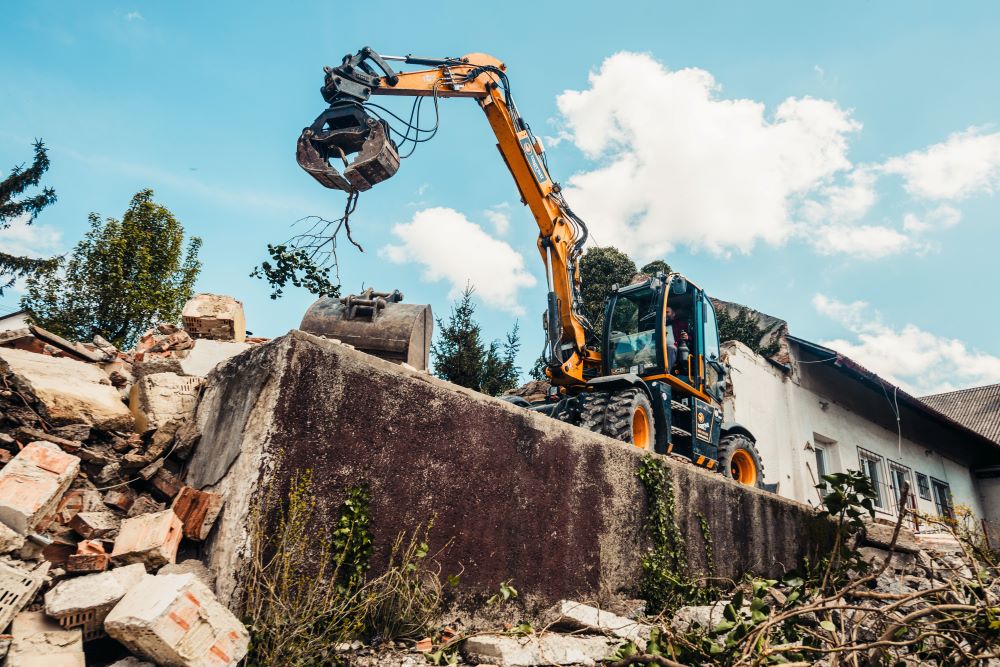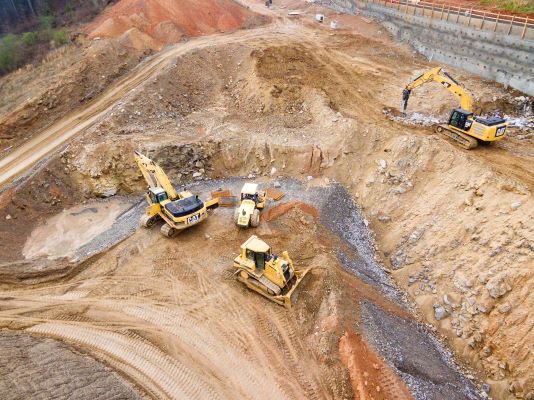
As people become more and more informed about the impact of material use on the environment, many are assessing how their building and demolition projects can be as green as possible. Building companies are looking for informative procurement to ensure the architecture built today is not contributing to problems for tomorrow. From sustainable design to retrofit, there are many ways to make construction greener. For sustainable architecture, recycled building materials can be reclaimed from demolition.
Why does it matter what happens to building materials?
In the UK, 420 million tonnes of materials are used in the construction industry each year. Producing building materials such as concrete, brick, glass and timber creates a lot of greenhouse gas (GHG) emissions. These include the gasses such as carbon dioxide, methane, nitrous oxide and fluorinated gases. Cement production alone creates approximately 7% of global CO2 emissions, so it is clear that construction is a large contributor to the increasing CO2 concentrations in the atmosphere. In fact, construction and building work account for 19% of the UK’s total greenhouse gas emissions, second only to the food industry. After demolition, construction materials account for 32% of all UK landfill content, so there are plenty of reasons to think again about material recycling.
Embodied Carbon in Construction
When designing more sustainable construction practices, industry leaders are paying attention to “embodied carbon”: the total CO2 emissions generated during the extraction of raw materials, material manufacturing, transportation, installation, maintenance and eventual demolition of a particular building or development.
Embodied carbon is a phrase that distinguishes these emissions from the ‘operational carbon’ released during the running of the building from energy use, for example. Paying attention to embodied carbon makes it easier to visualise the scale of a building’s carbon emissions beyond energy use.
Reduce, Re-use and Recycle: Building Materials
Reclaiming and recycling building materials is a means of breaking the cycle of extraction and waste. Rather than buying brand-new materials and accepting the CO2 involved in their manufacture, using reclaimed or recycled materials can be a more sustainable procurement strategy. Recycled building materials share the embodied carbon of a demolished building with a new structure, so the material impact of both buildings is less.

What Building Materials Can Be Recycled?
At present there isn’t much legislation around recycling targets for demolition, but many companies like ours have stated targets to reach 90% recycling rates. There is a difference between recycled and reclaimed materials, which we will go into here, but whichever way materials go, avoiding landfill wherever possible is key.
Recycled Building Materials
Any materials taken from waste and have gone through manufacturing processes to create new or parts of new products are considered recycled. These manufacturing processes of course have their own emissions footprint, but at a fraction of the emissions from producing new materials from scratch. Types of building materials that can be recycled include:
- Concrete – Crushed for Hardcore or substrate under roads or carparks
- Steel – Carbon steel is 100% recyclable and can be processed and recast in new steel products such as rebar, beams,
- Glass – Crushed to a powder as an alternative to sand or cement
- Timber – Chipped and formed into new boards or panels, burnt for bioenergy
- Rubber – Reprocessed and formed into new products
Reclaiming Building Materials From Demolition
While recycling often requires some degree of industrial processing, reclaimed building materials can be reused in or close to original condition. Reclaimed material is any material that was previously part of another structure, whether it was a building, a temporary work or even a railway line. If the materials from demolition are to be reclaimed, the contractors may start with soft stripping or structural dismantling to keep parts in good condition before using heavy demolition tools.
Reclaimed materials may be adapted and cut to size, repainted or refinished, cleaned or repaired, but they are basically re-used in their original form. Reclaimed materials can include:
- Bricks – Cleaned of debris and reused in new brick structures
- Steel – Re-finished, sanded, shot-blasted or refabricated for another purpose
- Glass – Either in a frame or as whole panes, glass can be reused easily
- Timber – Structural timber sections and floorboards finished, cut to size and reused

Other Types of Recycled Building Materials
When considering green construction, the recycled building materials available are not limited to those that can be salvaged. There are many examples of recycling other materials into building supplies, such as:
- Tiles: bathroom or kitchen tiles made from recycled glass can be beautiful and colourful alternatives to clay
- Panels: panels for floors, ceilings and partitions made from recycled rubber or cork are more sustainable
- AshCrete: fly ash from coal burning can be processed into a partial substitute for cement, creating a green concrete alternative.
- Plastic: reimagine building materials of all shapes and sizes with compressed dense plastic made from recycled waste. From benches to bricks, roof tiles to window frames, recycled plastic is a strong, flexible and cheap alternative to many traditional materials.
- Paving: paving can be made from recycled glass, creating an opportunity for colourful pathways and zones.
What Can’t Be Recycled After Demolition?
While we’d love to say every demolition can be zero waste, there are exceptions when materials need to go to a landfill. Any material with chemical contamination or asbestos, for example, is required to be disposed of safely.
Timber infested with woodworm or rot cannot be reused in construction, as it wouldn’t last. However, even contaminated timber can be used for biofuel or chipped for compost, so it isn’t a total loss.
General rubbish or low-quality material may not be recycled, as the new materials need to be strong and high enough quality to be used for construction.
Sustainable Demolition and Waste Reduction
While reclaiming and recycling building materials can add time to a project, the benefits are many, and these will show in businesses’ ESG reporting. The project will have a lower carbon footprint, create and support jobs in the reclamation and recycling industry and support a circular economy in construction by contributing to the pool of recycled building materials available. New constructions could reduce emissions from material transport and reuse the same materials on site, such as crushing concrete from a former structure to make hardcore for pathways and parking.








